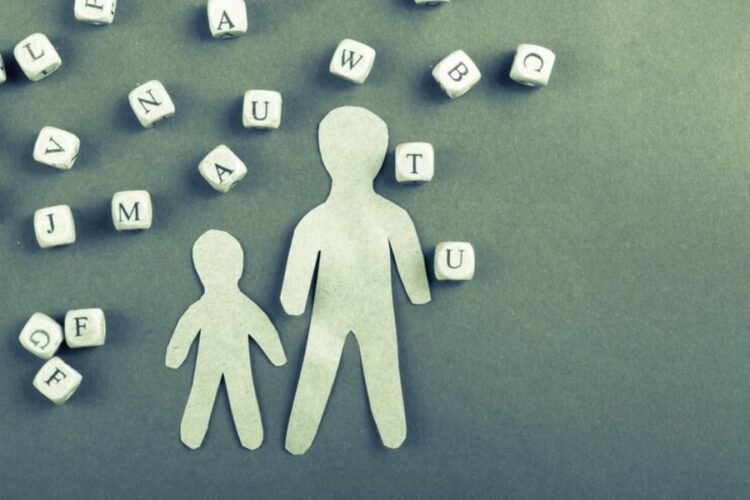Not sure when to use guardianship or custody?
Yeah, we get it – these terms get thrown around a lot, but they’re actually different. And it matters which you use…
Depending on your case, your situation could have a very different outcome if you choose the wrong legal arrangement.
With approximately 290,000 guardianship cases filed in US family courts each year, and over 26 million custodial parents in America, these issues pop up more than you might think.
The good news is…
By the end of this article, you’ll know which arrangement to use, and where to go from here.
Outline
- What Is Custody?
- What Is Guardianship?
- 5 Key Differences
- Make the Right Choice
- Contact Experienced Family Law Representation
What Is Custody?
At its core, custody means the right of a parent to make decisions for their child and to provide them with care.
But the first thing most people don’t know is…
The term custody is used to refer to two different legal concepts: physical and legal custody. Physical custody is who the child lives with. Legal custody is who makes important decisions for the child.
But there’s another wrinkle…
Legal custody is only applicable to biological or adoptive parents. If you don’t have a parent-child relationship, it’s not a tool that you should be using. You need a good family law representation for guardianship cases like specialists from Bourdon & Tortolero to help figure out what makes sense for your situation.
US statistics reveal approximately 12.9 million custodial parents. Mother are approximately 80% of custodial parents.
Types of Custody Arrangements
- Sole Custody: Child lives with one parent, who also has full decision-making authority
- Joint Legal Custody: Both parents share decision-making power, but physical living arrangements can differ
- Joint Physical Custody: Child spends substantial time with both parents’ homes. Legal decisions can be joint or sole
- Split Custody: Each parent has at least one child. Custody of other children are unaffected
Most people assume that all custody issues end up in front of a judge…
Not true. Approximately 90% of custody cases are resolved without ever entering a courtroom. Skilled negotiators can save families time, money, and frustration.
What Is Guardianship?
Guardianship is a legal relationship created by a court when someone becomes responsible for a minor or incapacitated adult.
Unlike custody, guardianship isn’t limited to biological parents. It can be grandparents, other relatives, family friends, or professional guardians.
Think about the situations that call for guardianship.
Children always have two parents. But when parents die, become incapacitated, or for other reasons, can’t care for them, someone still has to be able to make legal decisions for that child. Guardianship provides a legal vehicle for those situations.
When Is Guardianship Necessary?
- Parents are deceased or incapacitated
- Parents are otherwise unable or unwilling to provide adequate care
- Parents have voluntarily relinquished their rights temporarily
- Adult children who have disabilities and need continued assistance
One thing people get wrong a lot…
They assume guardianship terminates parental rights automatically. It does not always. Parents can retain some rights, even as a guardian is appointed.
5 Key Differences
Here are five key differences between guardianship and custody.
1. Who Can Apply
Custody can only be sought by biological or adoptive parents.
Guardianship can be sought by an interested third party, such as a relative, friend, or professional guardian.
2. Parental Rights
Custody orders leave parental rights intact.
Guardianship suspends or limits parental rights. The court decides which rights parents retain and which the guardian has.
3. How Long It Lasts
Custody orders last until the child reaches 18 or the court modifies them.
Guardianship can be temporary (months) or permanent (until adulthood).
4. Court Process
Custody is determined as part of divorce or separation proceedings.
Guardianship requires a separate petition showing the parents are unable or unfit to care for the child.
5. Termination
Custody can be modified if circumstances change.
Guardianship must be terminated by showing original reasons no longer exist.
Something else to consider…
Parents an sometimes petition to end guardianship if they can show they’re now fit to care for their child.
Financial Responsibilities
It’s important to note that financial obligations are different between the two.
In Custody
The noncustodial parent typically pays child support. Both parents have financial obligations to the child.
In Guardianship
Guardians may use their own resources initially, then seek reimbursement from parents or benefits.
Something most people don’t know…
Guardians may be eligible for government benefits the child’s parents aren’t, such as foster care payments or Social Security.
Make the Right Choice
So, which should you use? It depends.
Choose custody if:
- You are the biological or adoptive parent
- You’re going through divorce or separation
- Both parents are fit to parent
- You want to preserve full parental rights
Choose guardianship if:
- You are not the child’s biological parent
- Parents are unable or unwilling to care for the child
- You need a temporary arrangement
- You’re caring for an adult child with disabilities
Family law is complicated, and state-specific. You should consult with experienced family law representation to ensure you understand your options before proceeding.
The Role of the Court
Courts play different roles in each process.
In Custody
Focuses on the child’s best interests. Considers:
- Each parent’s relationship with the child
- Adjustment to home, school, community
- Mental and physical health of parties
- Willingness to support each parent’s relationship with the child
In Guardianship
Court determines whether guardianship is necessary. Considers:
- Whether parents are unable/unwilling to care for the child
- If the proposed guardian is suitable
- Whether guardianship serves the child’s best interests
Common Mistakes People Make
Assuming Informal Arrangements Work
Too many people operate under informal arrangements with no legal documentation or court orders. It works until something goes wrong. A medical emergency, school enrollment, or insurance issue. Without legal custody or guardianship, the caregivers have no legal authority to make decisions.
Confusing Guardianship with Adoption
Guardianship does not terminate parental rights. Adoption does. If you want a permanent solution, adoption is the way to go.
Ignoring Tax Implications
Both guardianship and custody have tax implications. Who gets to claim the child as a dependent? Who gets the various credits? It’s something you should be discussing with the other party when you’re arranging it.
State Specific Considerations
Family law is different from state to state. What may be a streamlined process in one is an uphill battle in another.
Before you take any action, do your research on your state’s specific requirements:
- Residency requirements
- Waiting periods
- Required documentation
- Court fees
Don’t assume information from one state applies in another.
Wrapping Things Up
Guardianship and custody are not just legal jargon, they’re the very foundation of how you’re going to care for a child legally.
Custody comes into play when parents are merely exercising their natural rights and responsibilities. Guardianship is when the parents are either unable or unwilling to fulfill their responsibilities. Both guardianships and custody orders are useful, but they’re for different circumstances.
But when these situations crop up (and they do, with over 290,000 guardianship cases in the US every year), having experienced legal counsel at your side makes a huge difference. Whether it’s custody arrangements during a divorce or guardianship for a child whose parents can’t care for them, an experienced attorney will guide you through the process, gather documentation, and make a compelling case.
The future of your family depends on doing this right the first time.









